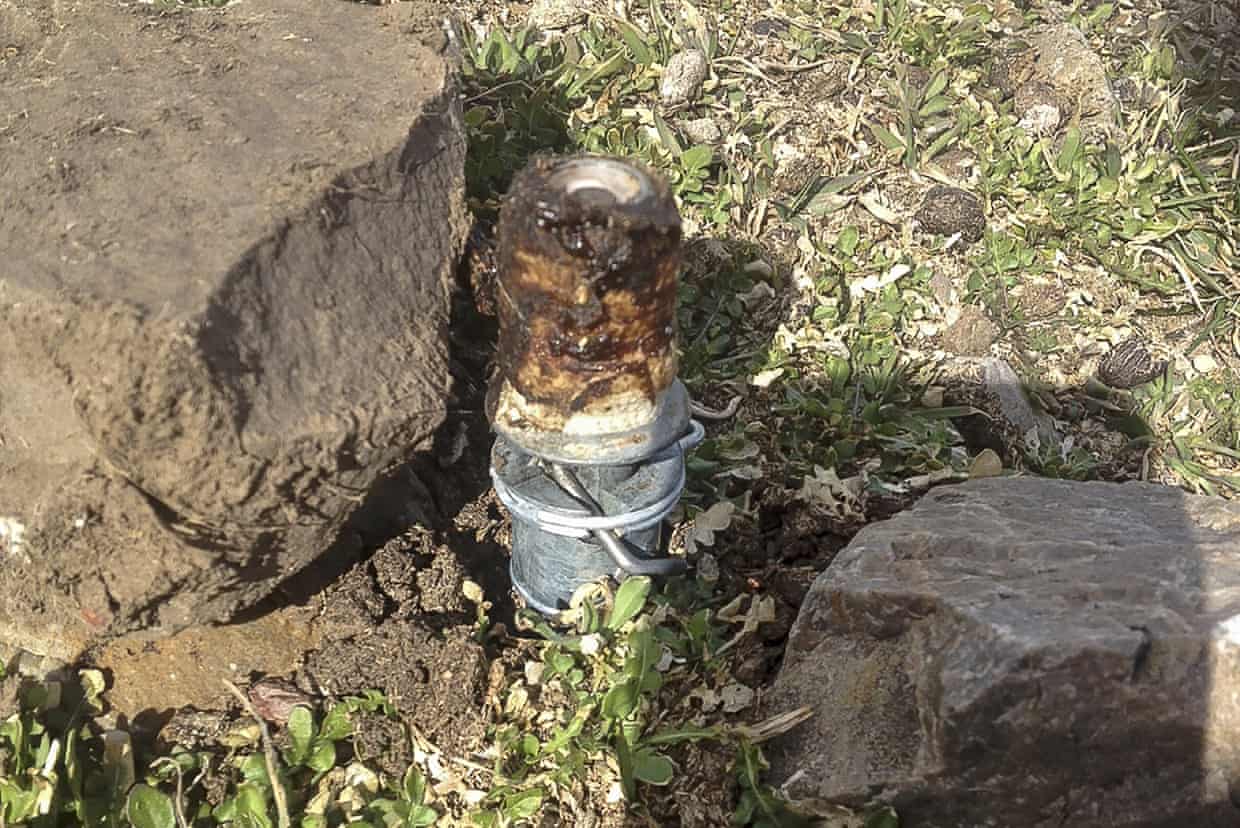The secretive government agency planting ‘cyanide bombs’ across the US
The call came over Tony Manu’s police radio one March day in 2017: some sort of pipe had exploded in the hills outside Pocatello, Idaho and the son of a well-known local doctor was hurt, or worse.
Manu, a long-time detective with the county sheriff’s office, was shocked. A pipe bomb in Pocatello?
“We were like, ‘Holy shit,’” says Manu. He hit the gas and screeched up winding mountain roads outside of town. “I thought maybe [the victim] was missing a leg or something. That is what it sounded like.”
At the home of Dr Mansfield and his family, he found a frightening scene. On the driveway, just outside the sprawling timbered house, the family’s dog, Kasey, was dead. Inside the home, Canyon Mansfield, 14 years old, the youngest of three children, was sobbing. His head was pounding and his eyes were burning – he needed to go to the emergency room.
Manu soon pieced together the story. While playing in the woods behind the family home, Canyon and his dog had stumbled upon a strange device that sprayed them in the face with a dose of of sodium cyanide. The boy managed to quickly clean the poison out of his eyes, but the dog collapsed and started convulsing. As Kasey lay dying on the hillside, Dr Mansfield had wanted to give Kasey CPR, but Canyon told him that if he did, he’d ingest the deadly stuff himself.
It didn’t take detective Manu and his team of investigators long to uncover how it got there. The so-called cyanide bomb was not the work of some rogue actor or terrorist cell. It had been installed by a federal employee on official business.
The government put a cyanide bomb 350ft from my house, killed my dog and poisoned my child.
“The United States government put a cyanide bomb 350ft from my house, and killed my dog and poisoned my child,” said Theresa Mansfield, Canyon’s mother.
More than three years later, she and her husband are in the midst of a legal and political campaign to hold the government accountable and ban the use of cyanide bombs nationwide. “I’m after justice,” she said.
If you haven’t heard of the US agency that placed the bomb, you’re not alone.
Its name is Wildlife Services, and for years it has operated in relative obscurity, with limited oversight from Congress or the American public. Housed in the Department of Agriculture, the agency primarily works on behalf of private ranchers and farmers, killing coyotes, wolves, bears, birds and other creatures that cause problems for agricultural interests. In 2018, it exterminated nearly 1.5 million native animals, and a huge number of invasive animals as well.
Sometimes its agents shoot wolves or coyotes from helicopters. Sometimes they employ leg traps and snares. And sometimes they place poison devices on public and private land. M-44s, also known as “cyanide bombs”, are baited and spring-loaded tubes that spray an orange plume of cyanide powder when triggered. Aimed at coyotes and other canids that predate livestock, they killed 6,500 animals in 2018 alone.
Congressman Peter DeFazio of Oregon, a long-time critic of Wildlife Services, has described the agency as more secretive than the Department of Homeland Security.
“I served on the homeland security committee for a decade, and Wildlife Services, so called, is more opaque than some of our intelligence agencies,” said DeFazio. “Basically, in some cases, it is rogue.” He said that the agency, which has a century-long history and roughly 2,000 employees, is highly decentralized. State offices like the one in Idaho basically “run themselves”, with little transparency or accountability to elected officials in Washington.Advertisement
Even local law enforcement agencies are sometimes unaware of the extent of the agency’s activities in their jurisdictions.



 The cyanide device, called M-44, is spring-activated and sprays poison designed to kill predators. Photograph: AP
The cyanide device, called M-44, is spring-activated and sprays poison designed to kill predators. Photograph: AP